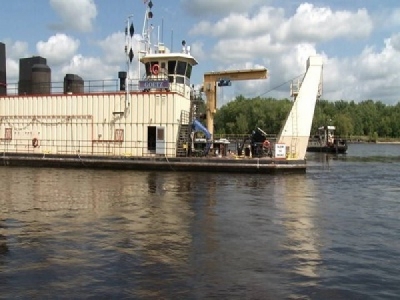
Posted on October 19, 2017
Advocates for modernizing the Mississippi River Ship Channel that connects the Gulf of Mexico and New Orleans’ Industrial Canal via the Intracoastal Waterway are eagerly awaiting the final Army Corps of Engineers report on the economic justification for deepening the channel to 50 feet from the gulf to the Port of Baton Rouge.
The Mississippi River Ship Channel General Reevaluation Report has long been delayed but is now expected at the end of September, said Sean Duffy, the executive director of the Big River Coalition, a group set up to advocate for maritime commerce across the Mississippi River and tributaries.
“We are hopeful the Army Corps economic project validation will be finalized as scheduled for March 2018,” Duffy and Paul Aucoin, the director of the Port of South Louisiana, said in an email.
“Our challenge going forward is to secure the funding to deepen the river, to ensure that all ports along the 31 states connected by the nation’s river remain reliable and open for business. If we cannot deepen the ship channel to 50 feet, we risk losing business to competing foreign ports.”
Duffy and Aucoin said that dredging the channel has become an ever-greater priority because the newly expanded Panama Canal now supports the movement of the larger neo-Panamax ships.
“The use of these ships is growing, because larger vessels serve to reduce transportation costs,” Duffy and Aucoin wrote.
“Our concern is that due to the potential unreliability of the Mississippi River, ships could begin to seek alternative ports to get their grains. The most serious threat posed to our dominance of the global commodity market would be in South America, primarily Argentina, which currently has a vibrant and growing agricultural system. If these new supercargo ships abandon the Mississippi River Deep-Draft Ports Complex, there is no guarantee they will return.”
They continued, “Farmers all across the United States would be cut off from the global marketplace; this would send economic shock waves through rural economies. Consider that more than 60 percent of all grain exported from the United States is shipped via the Mississippi River Ship Channel.
“Indeed, the Mississippi River Basin produces 92 percent of the nation’s agricultural exports and 78 percent of the world’s exports of feed grains and soybeans. Every year, over $21 billion in agriculture exports are shipped through Louisiana’s port system, and shipments are up 34 percent so far in 2017.”
The Waterways Council’s annual media tour this year showed reporters the New Orleans metropolitan area, including the Inner Harbor Navigation Canal known locally as the Industrial Canal, the Lake Bourgne Surge Barrier, the Port of New Orleans, Cargill’s grain elevator on the west bank of the Mississippi River, and Cooper/T. Smith’s Crescent Towing base of operations in Algiers, La.
During that tour, Duffy told reporters, “It’s often said that the world is fed out of the Mississippi River. This would serve to make the American farmer more competitive in world markets.”
Debra Calhoun, senior vice president of the Waterways Council Inc., said the group supports dredging of ports and channels, as well as port and harbor maintenance to facilitate shipping.
“Modern, efficient infrastructure includes properly dredged and maintained channels,” Calhoun said. “It all works together. No use modernizing locks and dams if vessels can’t transit because channels are silted due to lack of dredging.”
The Big River Coalition has submitted testimony to the Army Corps in favor of deepening the channel, but neighborhood and environmental groups are in opposition on the grounds that there are environmental hazards and that the construction will be disruptive to local communities.
Source: AJOT





